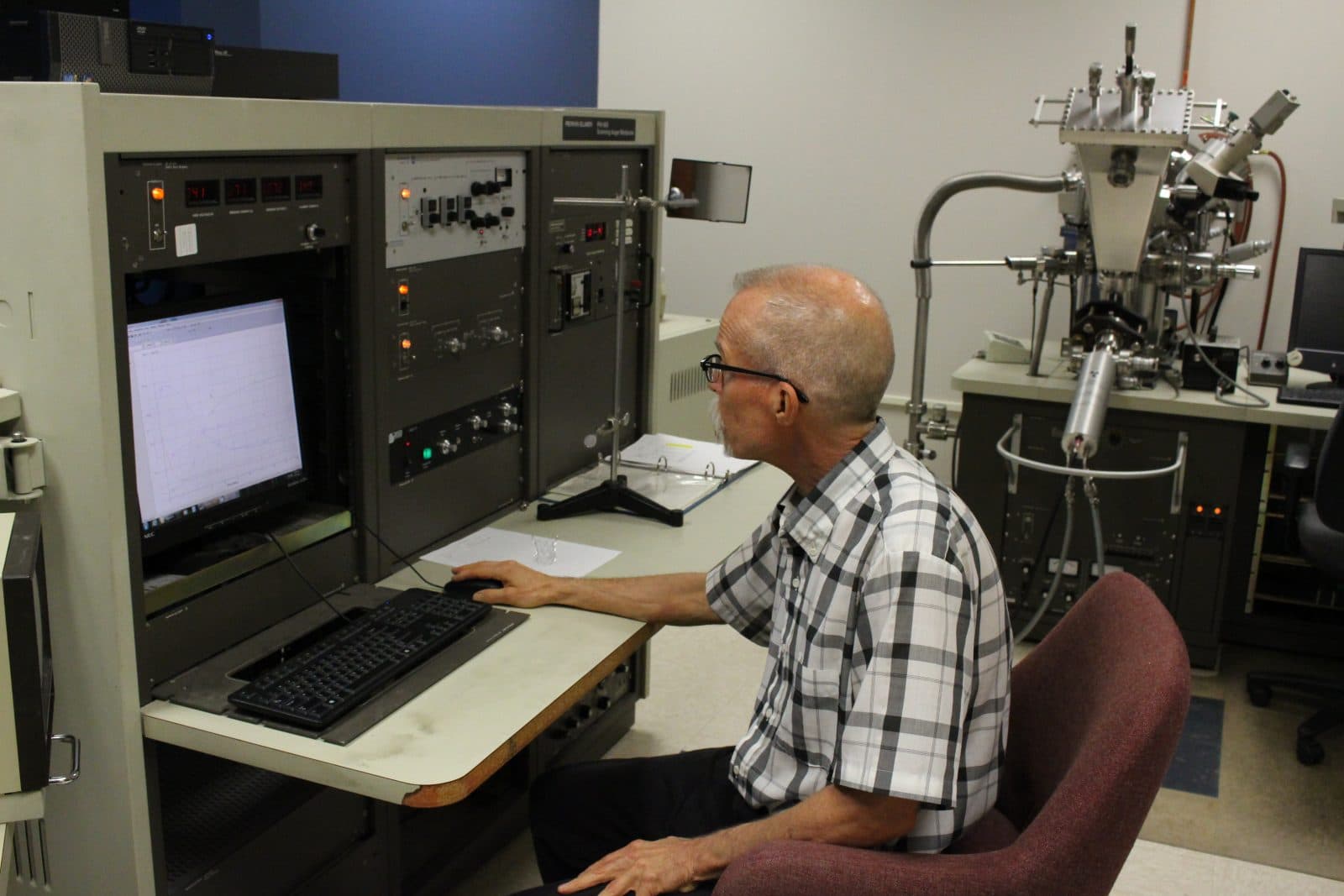
What is an Auger electron spectrometer (AES)? An Auger electron spectrometer (AES) is a powerful tool used in surface science to analyze the composition of materials. It works by bombarding a sample with a focused electron beam, causing the emission of Auger electrons. These emitted electrons carry information about the elements present on the surface of the sample. AES is particularly useful for detecting elements in the top few atomic layers, making it invaluable for studying thin films, coatings, and surface treatments. This technique is widely used in materials science, semiconductor research, and nanotechnology. AES provides precise, localized chemical analysis, helping scientists understand material properties at the microscopic level.
What is Auger Electron Spectroscopy (AES)?
Auger Electron Spectroscopy (AES) is a powerful analytical technique used to study the surface composition of materials. It involves bombarding a sample with a focused electron beam and analyzing the emitted electrons to determine the elements present on the surface.
- Named After Pierre Auger: The technique is named after French physicist Pierre Auger, who discovered the Auger effect in 1925.
- Surface Sensitivity: AES is highly surface-sensitive, analyzing only the top few atomic layers of a material.
- Electron Beam: A focused electron beam is used to excite the atoms in the sample, causing them to emit Auger electrons.
- Energy Analysis: The emitted Auger electrons are analyzed based on their kinetic energy, which is characteristic of the elements present.
- Non-Destructive: AES is considered a non-destructive technique, meaning the sample remains largely intact after analysis.
How Does AES Work?
Understanding the working principle of AES helps in appreciating its applications and limitations. Here are some key points about its operation.
- Electron Emission: When the electron beam hits the sample, it causes the emission of secondary electrons, including Auger electrons.
- Energy Levels: The energy levels of the emitted electrons are unique to each element, allowing for precise identification.
- Spectrometer: An Auger electron spectrometer measures the energy of the emitted electrons to create a spectrum.
- Spectrum Peaks: Peaks in the spectrum correspond to specific elements, enabling qualitative and quantitative analysis.
- Vacuum Environment: AES requires a high vacuum environment to prevent interference from air molecules.
Applications of AES
AES has a wide range of applications in various fields, from materials science to electronics. Here are some notable uses.
- Surface Analysis: Widely used for analyzing the surface composition of metals, semiconductors, and insulators.
- Thin Films: Essential for studying thin films and coatings, providing information about their composition and thickness.
- Corrosion Studies: Helps in understanding the corrosion mechanisms by analyzing the surface layers of corroded materials.
- Catalysis Research: Used in catalysis research to study the surface composition of catalysts and their changes during reactions.
- Failure Analysis: Important in failure analysis of electronic components, identifying contaminants or defects on surfaces.
Advantages of AES
AES offers several advantages that make it a preferred choice for surface analysis. Here are some of its benefits.
- High Sensitivity: Capable of detecting elements in very low concentrations, down to parts per million (ppm).
- Spatial Resolution: Provides high spatial resolution, allowing for detailed mapping of surface composition.
- Elemental Identification: Can identify all elements except hydrogen and helium, making it versatile.
- Depth Profiling: Enables depth profiling, providing information about the composition as a function of depth.
- Quantitative Analysis: Allows for quantitative analysis, determining the concentration of elements on the surface.
Limitations of AES
Despite its advantages, AES has some limitations that users need to be aware of. Here are a few.
- Sample Damage: Prolonged exposure to the electron beam can cause damage to sensitive samples.
- Complex Spectra: Interpretation of spectra can be complex, requiring expertise and experience.
- High Vacuum Requirement: The need for a high vacuum environment can limit the types of samples that can be analyzed.
- Surface Contamination: Surface contamination can affect the accuracy of the analysis, requiring careful sample preparation.
- Limited Depth: Only analyzes the top few atomic layers, which may not be sufficient for some applications.
Future of AES
The future of AES looks promising with ongoing advancements and new applications. Here are some trends and developments.
- Improved Detectors: Development of more sensitive and faster detectors to enhance performance.
- Automation: Increased automation in data acquisition and analysis to improve efficiency and reduce human error.
- Nanotechnology: Growing importance in nanotechnology for analyzing nanomaterials and nanostructures.
- Environmental Applications: Expanding use in environmental science for analyzing pollutants and contaminants on surfaces.
- Integration with Other Techniques: Combining AES with other analytical techniques like XPS (X-ray Photoelectron Spectroscopy) for comprehensive surface analysis.
The Final Word on Auger Electron Spectroscopy
Auger Electron Spectroscopy (AES) is a powerful tool for surface analysis. It provides detailed information about the elemental composition of materials. AES is widely used in various fields, from materials science to electronics. Its ability to detect elements at the surface level makes it invaluable for research and industrial applications.
Understanding the basics of AES can help you appreciate its role in modern science. Whether you're a student, researcher, or just curious, knowing these facts can broaden your knowledge. AES continues to evolve, offering even more precise and detailed analyses.
So, next time you hear about surface analysis, remember the importance of AES. It's not just a tool; it's a gateway to understanding the microscopic world. Keep exploring, stay curious, and let AES guide your scientific journey.
Was this page helpful?
Our commitment to delivering trustworthy and engaging content is at the heart of what we do. Each fact on our site is contributed by real users like you, bringing a wealth of diverse insights and information. To ensure the highest standards of accuracy and reliability, our dedicated editors meticulously review each submission. This process guarantees that the facts we share are not only fascinating but also credible. Trust in our commitment to quality and authenticity as you explore and learn with us.
